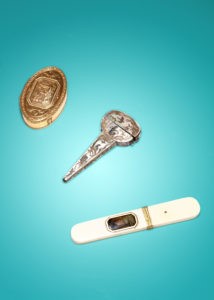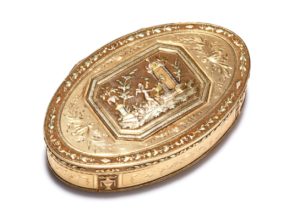The Art of Snuff: From Apothecary’s Remedy to Gentleman’s Accessory

Tobacco first arrived in Europe in the 15th century, initially grown as an ornamental plant at the Spanish and Portuguese courts. It wasn’t long before its supposed medicinal qualities were recognised. In the 16th century, tobacco was prescribed to treat colds, asthma and migraines. The French ambassador to Portugal, Jean Nicot (1530–1604), famously introduced the plant to the French Court. His name lives on in the botanical classification Nicotiana tabacum.

From Medicine to Fashion
Originally dispensed by apothecaries, tobacco soon found a new life as a recreational substance. While it was first smoked in pipes, it quickly gained popularity as snuff, a finely ground and often fragranced powder that could be discreetly sniffed. Especially useful in masking the less pleasant smells of the streets, snuff became fashionable across all levels of society.
Although it was chewed by the working classes and bourgeoisie, snuff was widely adopted by the aristocracy. By the 17th and 18th centuries, the 'art of snuff' had become a fixture of elegant European salons.
Snuff Boxes: Symbols of Taste and Status
As snuff use spread, the need for portable, stylish containers grew. The ideal pocket snuff box was small, flat and airtight to protect the powder from moisture. But beyond function, snuff boxes became a reflection of one’s style, status and even mood. It became common practice to match one’s box to an outfit, occasion or setting.
By the mid-18th century, specialist artisans across Europe were producing snuff boxes in a wide range of materials:
Gold, often engraved, chased and set with jewels
Porcelain, enamel, ivory or agate, frequently painted or decorated
Tortoiseshell and mother-of-pearl, prized for their finish and texture
Some were gifted as tokens of love or friendship. Others were awarded as diplomatic or military honours, presented as elegant symbols of appreciation and esteem.
Silver Snuff Boxes and the Rise of the Middle Class
As snuff became more accessible, so too did the materials used in the production of snuff boxes. By the late 18th and early 19th centuries, silver snuff boxes were being produced in large quantities in Birmingham, catering to an expanding middle class.
Leading silversmiths of the time included:
Samuel Pemberton
Edward Smith
Nathaniel Mills, known for his scenic engravings of castles and British landmarks
These boxes remain popular with collectors today for their craftsmanship, historical value and tactile charm.
Do you have a silver snuff box or antique silver item you’d like valued? Get in touch with our Silver department for a free and confidential valuation. Contact Head of Department John Rogers at john.rogers@chiswickauctions.co.uk or submit an Online Valuation today.